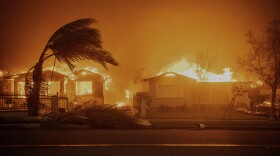The San Diego Police Department, San Diego Fire-Rescue Department and Scripps Health came together to train for the worst: the remote possibility that someone decided to shoot up the hospital.
“We don't want to think about active shooter situations, but this is the unfortunate reality of what's occurring and happening throughout the United States and throughout the world today,” said San Diego Police Chief Shelly Zimmerman.
Approximately 280 hospital, law enforcement and fire department personnel came together for the exercise at Scripps Memorial Hospital in La Jolla on Friday.
Zimmerman said this kind of multi-agency cooperation elevates the quality of her officers' work.
“We train together to provide the highest level of services and its all about saving lives,” Zimmerman said.
Chris Van Gorder, Scripps CEO, said training like this helps his staff and first responders learn about a hospital’s unique needs.
“An evacuation of a hospital is a very, very different situation than an evacuation of an office building,” Van Gorder said.
Assistant Fire Chief Brian Fennessy said the training helps firefighters stay ahead of the curve.
“It is no longer acceptable to stand back until the police department clears us in to treat injured patients,” he said.
San Diego firefighters are ready to go into dangerous situations with officers even though its not what the state says they must do, Fennessy said.
“We’ve taken a position that we’re not going to wait for the state to come out with their training criteria,” Fennessy said.
But Van Gorder wants to stress that hospitals are still safe places.
“While it's still more likely to be struck by lightning than it is to be shot in a hospital, this is the kind of situation we still want to be prepared for,” Van Gorder said.







